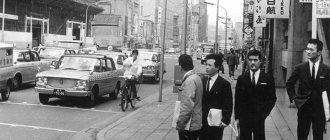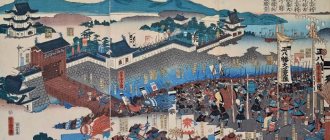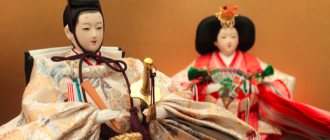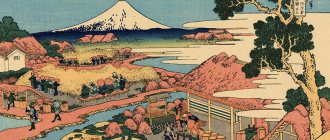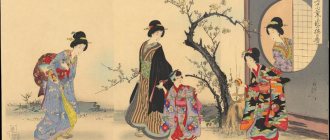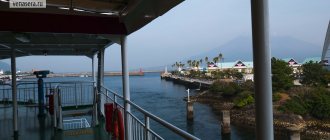North Korea and Japan have been at odds since the early 20th century. Historically, Korea was a weaker state, so Japan, which made economic and technical breakthroughs, was able to establish power on the peninsula. Having turned Korea into a colony, the invaders began to impose their laws and traditions, displacing Korean culture. Residents of the country remember the cruelty of the colonialists and still hate them.
History of countries
The end of the 19th century was a time of technical breakthrough for Japan. She opened the borders and allowed Western representatives into the country. Thus, in 30 years, an agrarian backward country turned into an economically and technically developed country. Such a breakthrough gave Japan the opportunity to feel its power and demonstrate it to neighboring, weaker states - Taiwan and Korea, which at that time was a single country .
The occupation began in 1910. The Japanese army gained a foothold on the Korean Peninsula without much difficulty.
Prior to this, for five years she maintained the status of “protector” of Korea, supposedly helping to develop economic potential. In fact, Korea was turned into a territorial appendage, which was valued by Japan solely because of the lack of land on the islands.
The activities of the invaders on the peninsula can be assessed in two ways. On the one hand, under Japanese rule, Korea's economic and technical level actually increased. Factories with modern equipment appeared in the country, schools (including for girls), hospitals with European medicines, and the first university were opened. The soldiers were taught to handle new types of weapons and the army was reorganized. However, the Koreans as a nation paid a heavy price for this rise.
Corporal punishment of Koreans has become a common practice on the part of Japan.
Japan's crimes against Korea
Japan pursued a total policy of assimilation. The Empire hoped that Korea would remain a colony for a long period, so “adjusting” the country to the needs of the Japanese was more important than improving the lives of the indigenous population. In the new educational institutions, classes were taught only in Japanese, and Koreans were forbidden to celebrate national holidays.
It got to the point that in the early 40s, the authorities passed a law requiring Koreans to change their national names to Japanese ones.
Before Japan's surrender in World War II in 1945, this process affected 80% of the peninsula's population, then the reverse process of Koreanization began. The Japanese also had a negative attitude towards Christianity, which spread to Korea through Western missionaries. Church services, keeping the Bible and propaganda of religion were prohibited. Instead, they tried to introduce Shintoism, a traditional Japanese religion based on the cult of ancestors, spirits and the forces of nature. Beliefs alien to Koreans did not take root on the peninsula.
Japanese Shinto shrine maidens (left) and a traditional Korean shamanic ritual (right).
During World War II, Korean soldiers were forced to fight for Japan, often as cannon fodder. Colonials were treated as second-class soldiers in the army. Corporal punishment and executions were common. Another famous crime in Japan is “comfort stations.” This was the name given to the field brothels in which Korean, Taiwanese, Filipino and Chinese girls were forced to work.
Monument to the victims of the Japanese “comfort stations” in Busan, South Korea.
Difficulties of Korean-Japanese relations. Part One: History
Korea's interactions with its neighbors have always been difficult. For many centuries, the country of morning freshness suffered from the influence of China, Mongolia, Manchu raids and wars of conquest with the Japanese. But the colonial period (식민지시대) occupies a special place in the history of the country.
Map of the Japanese Empire with dates of the seizure of territories, late 19th - early 20th centuries.
between 1910 and 1945 . The decision to become part of the Japanese Empire was not voluntary; the occupation was forced. The Japanese pursued a harsh policy towards the Koreans, subjecting them to both physical and psychological violence. However, the opinions of contemporaries regarding this period were divided. Some (supporters of the so-called “colonial modernization”) believe that at this time Korea achieved unprecedented economic growth, and society was going through one of the stages of development. Others (supporters of the so-called “colonial exploitation”) believe that the Korean economy after 1945 had to be developed from scratch, and the country was subjected to severe exploitation during this period.
To better understand the reason for Japan's interest in Korea, it is necessary to know what happened in both countries on the eve of the colonial period.
Japan
In the period from 1868 to 1889, Japan transformed from an agricultural country into one of the leading countries in the world. This time in history was called the " Meiji Restoration ".
The name of the period was given by Emperor Mutsuhito (1852 - 1912) - “Meiji” (“enlightened rule”).
The country is abandoning self-isolation and making a “leap” from the past to the future, changing the logic of the traditional way of life and forming a society according to the European model. The reign of the samurai ended, power was returned to the emperor. Reforms have been made in almost all spheres of life, from the economy to education. In particular, the feudal structure of the country was eliminated, private property was allowed, the University of Tokyo was founded, universal military service was introduced, the “master-servant” behavior model was eliminated, inter-class marriages were allowed, etc. Having strengthened its internal positions, Japan decides to dominate the entire region. In particular, relations with Korea are of great interest.
Korea
Korea is in no hurry to improve relations with its neighbors. At the end of the 19th and beginning of the 20th centuries, it showed itself to be a weak player on the world political stage. A country torn apart by internal contradictions and riots cannot repel external invaders. The king, later emperor, Kojong, having no real power, continues the policy of isolation begun by his predecessors. Japan, after short debates and provocations, decides to seize Joseon Korea, which refuses to make contact.
Warlord of the Joseon era, 1863
However, this process occurs gradually. Colonization was preceded by a number of measures on the part of the Japanese, namely: the signing in 1876 of a Japanese-Korean friendship treaty on the island. Ganghwado , according to which the largest seaports of Busan, Wonsan and Incheon were opened to Japan. In addition, the Japanese achieved the right to acquire Korean land holdings and actually deprived the country of customs autonomy. They gradually penetrated into all spheres of activity, first controlling the press and individual departments, and then becoming “advisers” to the king. And finally, the murder of Queen Min, Gojong's wife, who actually rules in his place. All these conditions created favorable conditions for the annexation of Korea.
It should also be noted that Korea at that time was the center of a clash of interests of several countries besides Japan: Russia, China, the USA, England, France, Austria, etc. However, due to the remoteness, the Western states quickly surrendered, and Japan untied Russia and China. a war in which she emerged victorious. Therefore, no one could prevent Japan from realizing its plans as a metropolis.
Korea as a colony
During the colonial period, Korea was led by a governor-general appointed from Tokyo. As a rule, the governor general was appointed from among the Japanese military. This explains the harsh authoritarian policies pursued in the colony. However, in 1919, Saito Makoto was appointed to this post - the only one not from the military. He pursued a relatively mild " cultural management policy ", encouraged Korean culture, and was against violent measures.
Seoul during the Japanese occupation.
By becoming a colony, Korea lost its sovereignty . The country acted as a market for both labor and farmed products. About 90% of all investments belonged to the Japanese, as did 3/5 of all enterprises.
The people were discriminated against , and the Korean language was banned from teaching in schools. More than 200,000 Korean historical documents were burned. Only the Japanese were granted the right to be a judge, to elect and to be elected, and the highest legislative and executive powers were in the hands of the governor-general. The government had an Advisory Council consisting of famous Koreans, but it had no real influence.
In 1911, the Japanese demolished part of the buildings of the famous Gyeongbokgung Palace complex, building the Governor General's House. In 1939, the Name Change Decree , according to which every Korean had the right to change his name to a Japanese one. In fact, more than 80% of Koreans took Japanese names because they were persecuted if they refused. The colonialists actively promoted Shintoism and built Shinto shrines. Comfort stations ”—brothels for the Japanese military, where “comfort women” were kept in sex slavery— became notorious throughout the world The girls were either kidnapped or, with the promise of work in Japanese factories for large pay, were lured into brothels by deception. Not everyone was destined to return home: many died from daily torture, many committed suicide.
At the same time, it was during the period of occupation that the Korean economy, education and industry grew.
Economics and politics
By the end of the colonial period, there were more than 7 thousand factories in Korea, employing about 300 thousand workers. The average growth rate of the Korean economy was about 4%. New technologies were introduced in agriculture, and the area of cultivated agricultural land grew. Many buildings were built that became prototypes of modern ones. Among them: Keijo Station, Chosen Bank, People's House. For about 10 years, railways were built to connect modern Seoul with the northern regions of the Korean Peninsula. Products were exported both directly to Japan and to China, Russia, the USA, India, and Thailand. Imports are mainly from China, Manchuria, and the USA. A judicial system of three levels was introduced: local, appellate and Supreme. The country's territory is divided into provinces, each headed by a governor (Japanese or Korean). A law enforcement system was established.
Chosen Bank, now the Bank of Korea Museum, 1909.
Social sphere
Korean traditional medicine was viewed with distrust by the Japanese. But the use of modern medicines was introduced, and therefore the life expectancy of the population increased from 20 to almost 45 years. The population almost doubled and amounted to about 27 million people. At the same time, the number of prisons grew steadily, because... There were many dissatisfied with colonial policy.
In 1924, the first Korean university was opened - Keijo Imperial University (it was on its basis that Seoul National University was later created). True, only the Japanese had the opportunity to attend it, since training was conducted in Japanese. The literacy rate has increased significantly: from 2% to 40%. In the field of school education, the Japanese model was taken as a basis, with a division into primary and secondary schools. It became possible to attend classes in special vocational schools, where they taught, among other things. and on gisaeng.
The first newspapers appeared in Japanese and Korean (Maeil Shinbo, which still exists today, the Chosun Ilbo). The censorship system was quite strict only in relation to Korean publications. In 1927, the first radio appeared and became very popular. During the occupation, Korean literature, in particular prose, also flourished. When writing works, they now used exclusively Korean writing, leaving Chinese in the past.
Struggle for independence
The Koreans did not give up attempts to gain independence on the peninsula. On March 1, 1919, the first major independence movement occurred. At its origins were Korean students and patriots who advocated the need to create a Declaration of Independence.
The movement turned out to be large-scale. Starting in Seoul, it gradually grew throughout the country, increasing its supporters every day. A year later, the uprising was brutally suppressed by the Japanese army. As a result, about 7 thousand people died, but the imperial policy towards Korea softened - it was at this time that Saito Makoto took office. In memory of the first national resistance, March 1 was declared the Day of the Independence Movement.
Residents of Seoul welcome independence fighters released from prison, 1945.
The Korean government in exile later established the Provisional Government of the Republic of Korea in Shanghai. Among the founders is the first president of the Republic of Korea, Syngman Lee. The activities of the unrecognized Provisional Government consist of coordinating partisan detachments and managing the Korean Liberation Army. But in fact, despite all efforts, Korea manages to achieve independence only years later due to the surrender of Japan and the impossibility of its further management of the colony.
____________________
End of the first part
MaryBlue © YesAsia.ru
Anti-Japanese guerrilla struggle
In Korea, anti-Japanese sentiment was already strong during the occupation. The future leader of the country, Kim Il Sung, a supporter of communism, which was banned in Japan, led a guerrilla fight against the occupiers . Over the course of 15 years of the underground movement, he gathered a circle of devoted people who, in the future, after the end of World War II, brought him to power.
The occupation ended with the surrender of Japan. After the defeat and nuclear strikes inflicted by America, it was in a weak and humiliated position, so it could no longer hold foreign territories. So all the colonies, including the Korean Peninsula, were lost. For North Korea, which was created in 1948, Japan came to represent the main enemy . Hatred of the nation has become a powerful tool of propaganda and social unity.
Memorial cemetery for the heroes of the anti-Japanese movement in North Korea.
The social system of the DPRK songbun was built on the events of the colonization period. It involves the division of people into classes depending on what activities a person’s ancestors carried out during the Japanese occupation. Participation in the underground struggle determines a position in the upper class; cooperation or family ties with the Japanese lowers the status. This system is still in effect, although it is less important than under the rule of Kim Jong Il.
Development of relations after the war
The warming in relations between the countries began in the 60s, during the aggravation of Japanese-South Korean disagreements. It was beneficial for North Korea for Seoul and Tokyo to be at odds - this weakened its southern neighbor, who was then in a vulnerable economic position . There have not yet been large subsidies from America to South Korea, while the North was supported by the Soviet Union. However, such “insidious” reasons for cooperation did not ensure good neighborly relations.
Protest in South Korea against Japan. Protesters burn portraits of Prime Minister Shinzo Abe.
Already in the 60s, the rivalry intensified again. This was largely due to the establishment of Japanese-Chinese and Chinese-South Korean relations. In addition, South Korea began to gradually gain economic power, turning into a significant rival of the DPRK. Ever since the division of the country, North Korea had hoped that in the near future it would be able to remove the government of Seoul and establish power on the peninsula . The intervention of neighboring countries prevented this.
Japanese concentration camps: forced labor and death
Those who managed to survive the massacres were sent to forced labor. On average, Japanese authorities mobilized about ten million Chinese citizens. The mortality rate was colossal, about 80 percent. For example, more than 100,000 Asian civilians died during the construction of the Thai-Burma Railway alone. The Japanese authorities willingly violated the Geneva Convention, which they themselves ratified in 1929. According to the document, prisoners of war who were higher in rank than sergeants were to receive additional food during the period of work. However, the Japanese government was in no hurry to increase the rations of working prisoners.
Chinese prisoners of war
